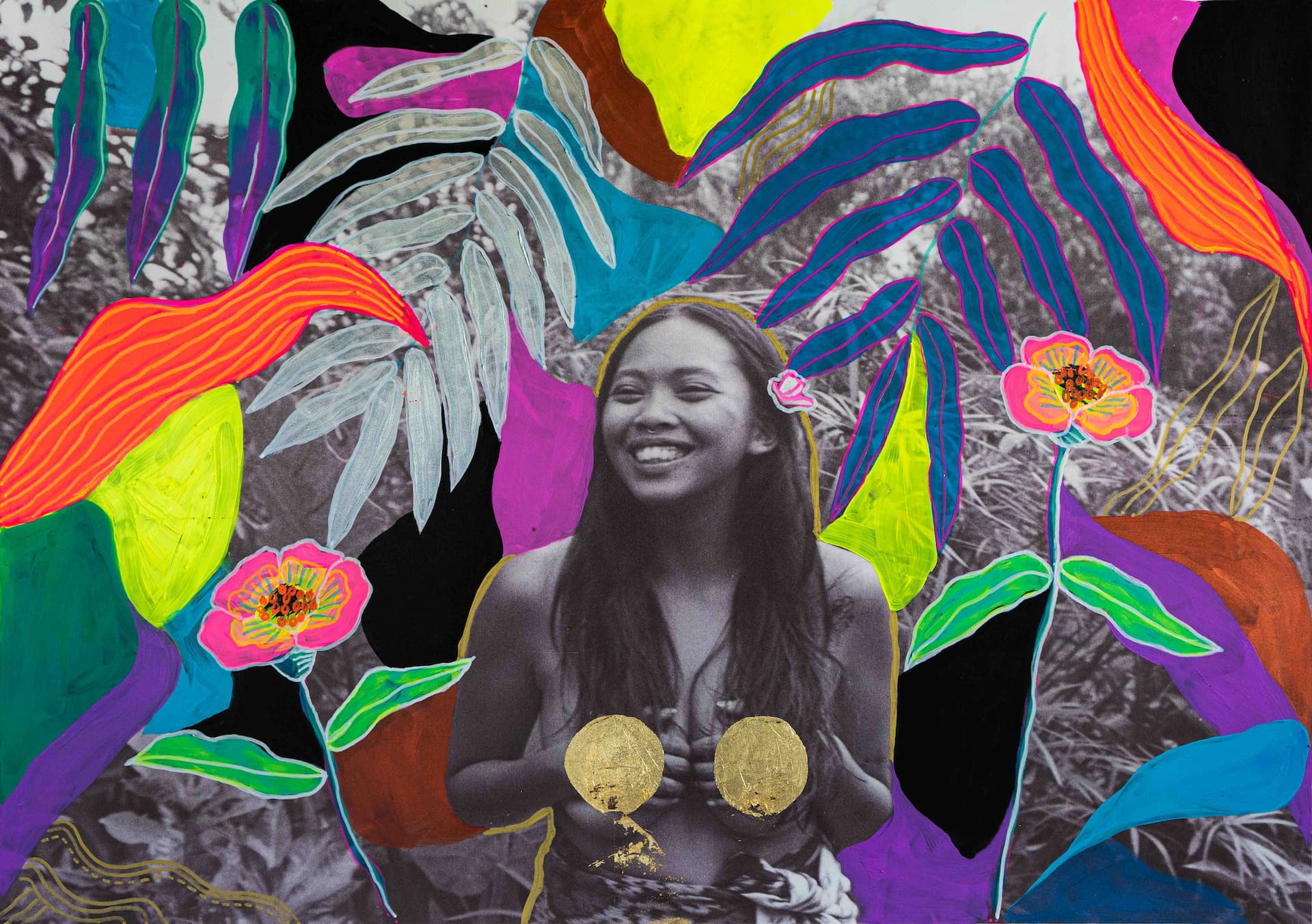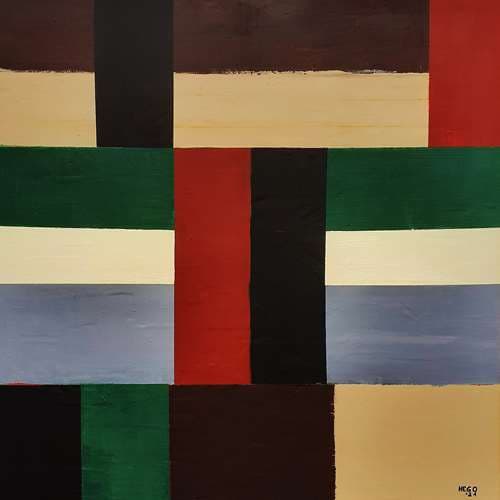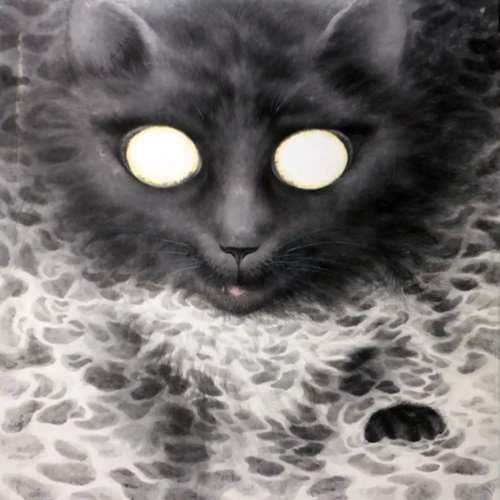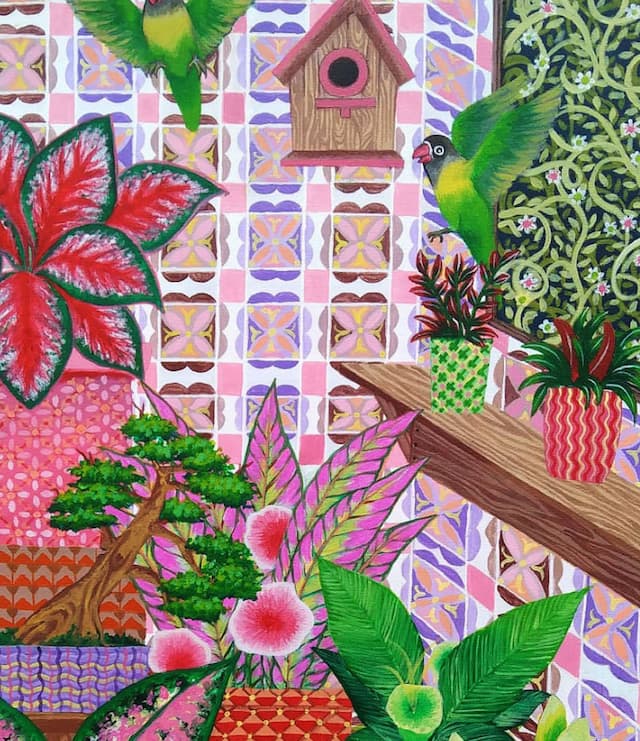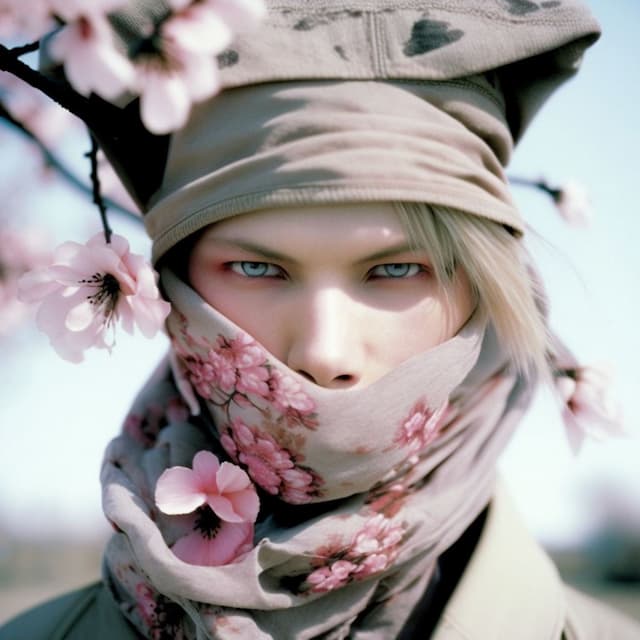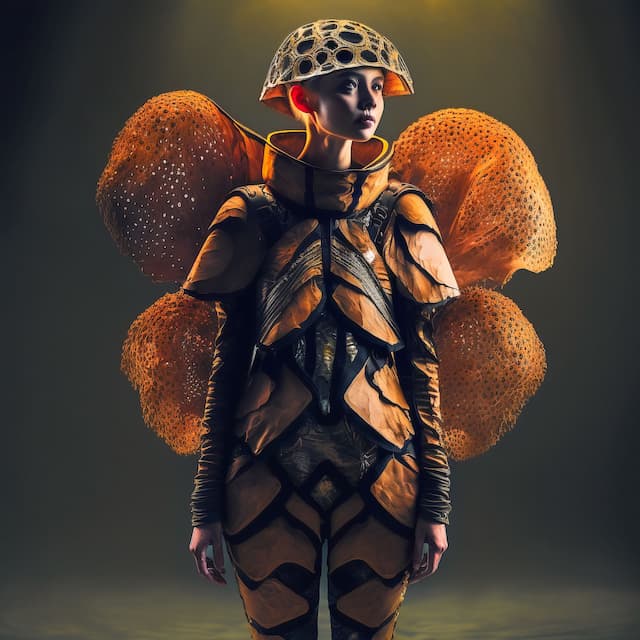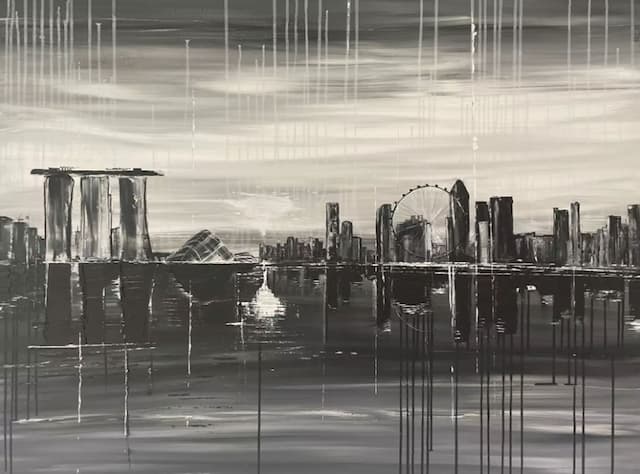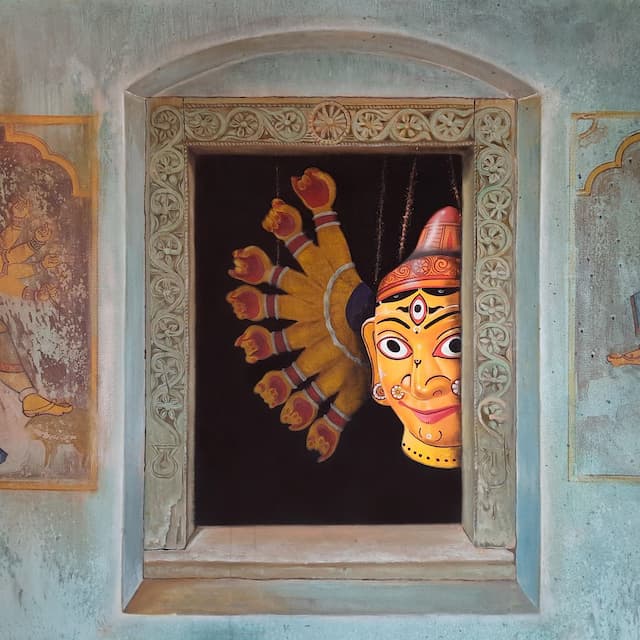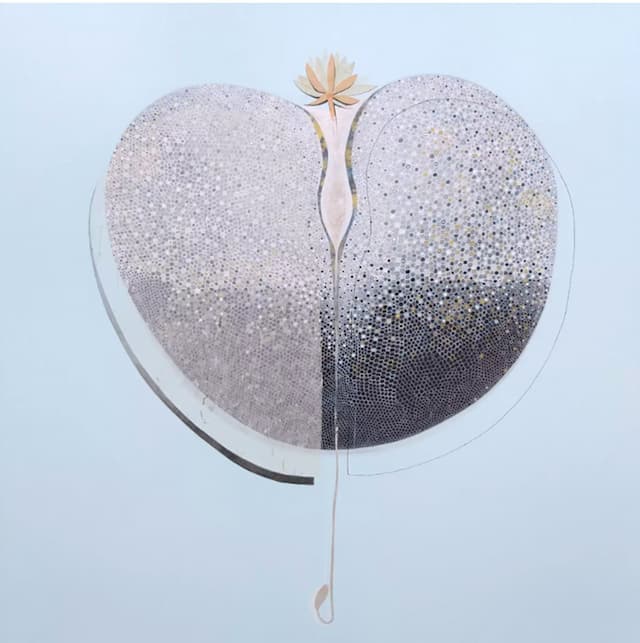Subscribe for our newsletter to have the latest stories and curated art recommendations delivered straight to your inbox
Women Creators in the World of NFTs. She is Unstoppable.
RtistiQ
 Like
Like comments
comments SAVE
SAVEThe NFT industry is greatly expanding as new NFT artists and creators release new collections with new use cases and utilities. This is only the beginning of web 3 going mainstream. But the bad news is that there is a skewed gender gap between the number of men and women in the sector. Male creators represented 77% of NFT art sales, while only 5% went to women creators in 21 months to November 2021. A caveat is that 16% were chalked up to creators of an “unknown” gender – well at least there is hope that a somewhat higher number for women may be active in reality. But it still represents a stark gender disparity.
To increase diversity and inclusivity in the world of NFT and web 3 is key to creating opportunities for women around the world to be creators of this new era of the web. Male artists have dominated for generations and only a selected number of female artists have got the visibility they deserved. Art history has been dominated by male artists like Da Vinci, Michelangelo, Rembrandt, Caravaggio, Picasso, and many more. With few exceptions, such as Artemisia Gentileschi or Angelica Kauffman, there are almost no known female artists before the 19th century. We know very little about how art movements like Renaissance, Mannerism, Baroque, Rococo, or Neo-Classicism would have looked if depicted by female artists. In the last century, with a change in our society, women slowly gained their well-deserved spot in the art world. This change made it possible for talented women artists like Georgia O’Keeffe, Yayoi Kusama, and Frida Kahlo to be celebrated in major museums and their contribution to art history be acknowledged. Despite the constant progress, female access to leadership is still limited and women are still facing more challenges on their way to success than their male counterparts.
In response to these concerning facts, RtistiQ is glad to announce a little step towards a mission to change this disparity and onboard the next generation of women creators and create equal opportunities. We want women to enrich the NFT movement. We will thus be putting the spotlight on 14 amazing women artists in our upcoming auction “Closing the Gender Gap”.
The female artists whose works will be featured have been changing many walls of the physical world. We don’t want these artists to be overlooked by NFT art space and wish to give them the recognition they truly deserve. Every art lover or collector should know about them. The rise of the Metaverse means this very rich VR world needs whimsical creations - from art styles of abstract, figurative, feminist, pop art, new expressionism, naive art, spiritual and graffiti - which will all be a part of this collection.
There will be 5 unique physical art-based NFTs on auction from each of the 14 artists. Thus, a total of 70 digital assets will be available to bid on the auction page that goes live on 12 May. These rare NFTs will open up possibilities of investment and trade inside the Metaverse. An excellent opportunity to grab iconic collectables and to celebrate a community that represents inclusivity and equal opportunities for all, especially diverse and dynamic women who have enriched several types of art styles inspiring their audiences.
Let’s set the tone for a bumper 2022 for the world of NFTs where all talent is welcomed, valued and nurtured. NFT and crypto enthusiasts have diverging demands and for those demands to be met there need to be diverging artists who challenge stereotypes and redefine aesthetics. That is what these 14 artists bring to the key assets and pillars of Metaverse asset flow and ownership.
Explore our Curated Collections
SIMILAR ARTICLES
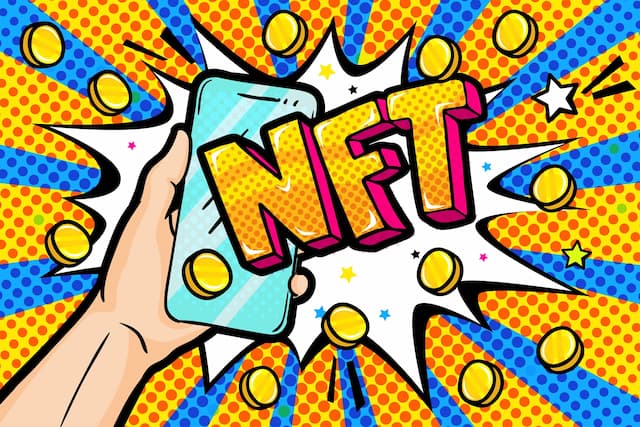
How NFTs are Benefiting the Art Marketplace
Non-fungible tokens (NFTs) are certainly popular, and in the last year they have dominated art news headlines with tales of extravagant price tags. It’s a lot of heat and excitement, but just because NFTs are selling for a lot of money, does that really mean that they are good for the art marketplace? After all, there are plenty of items that sell at traditional auction houses for tens of millions of dollars, but very few artists and art lovers actually see any benefit from that kind of wealth being thrown around. But NFTs are different. They could very well reshape the way we think about buying and selling art, and they are overturning age-old expectations — in many ways for the better. Let’s look at some of the ways that NFTs are benefiting the art market. Greater Control for the Artists In the art market as we’ve known it, gallerists and art dealers have a lot of power. Their expertise and connections give them the ability to find buyers for artwork, and they can be especially helpful for artists just starting to break into higher prices. So what’s the problem with this system? Artists themselves rarely have the time to become experts in the art market or make the connections they need to move their art. That puts them at a power disadvantage. Even worse? There is almost a cultural stigma against artists diving into the pedestrian world of commerce. But NFTs allow certain new conditions for sales, conditions that artists can build into an NFT of their work. For instance, you can make an NFT of a digital work of art and guarantee that every time it is resold, the artist gets 10% of the price. What’s better, artists have access to the bidding information and the entire provenance of their work. That means they can see everyone who bought their artwork and how much they paid. This single change will revolutionize the artworld by leaps and bounds, helping artists to get more of the money their work generates. Greater Access for Art Lovers on Marketplaces On the other side of the coin are the art lovers. Many people want to buy art , but if you aren’t well connected, it can be hard to have access to everything that’s actually available out there. Of course, gallerists and auction houses and art dealers want to meet with and encourage every single art buyer. But the reality is that there is an emphasis on big time art buyers in the current art market. After all, if you are an art dealer with limited resources, are you going to focus on the tycoon you know who spends millions on art each year , or the middle income art lover just now wanting to buy? With NFTs, marketplaces are wide open. Auctions are available to everyone, and little if any information is reserved for a select few. This is letting more people leap into the world of art buying. That combined with the empowerment of artists means a lot more direct buying and selling of art. NFTs Are Changing When we think of NFTs in the artworld today, we predominantly think of auctions for blocks in a blockchain that are linked to digital files — like JPGs, MPEGs, GIFs, and so on. This has caused many to scratch their heads because when you purchase NFT arts for sale, you aren’t the only person with access to the art work. Anyone can still copy and share these files infinitely. But here is the thing: NFTs aren’t done evolving, not by a long shot. Remember when we talked about artists being able to use NFTs to get 10% of all future sales of their art? That’s what is called a smart contract. These are critical elements of NFTs, giving people the ability to have contract clauses automatically fulfilled when certain terms are met. And since NFTs copy the provenance of an artwork in a safe and secure way, they take the burden of provenance off of both the artist and the art buyer. Put these two things together, and you can see how NFTs won’t just become interlinked with the digital art market. They can also become critical features of the physical art market. As NFTs grow and change, we will see the art market shifting along with them. We are standing at the precipice of a major development in the art world. NFTs are going to be a core piece of this change.
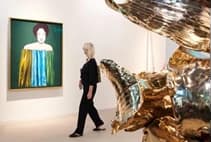
Leading Art Fairs of the World
Over time as artistic workmanship and production continues to grow, we see a greater exchange of ideas and arts that has transcended borders. This has been facilitated by art fairs which has managed to provide a common platform to artists, collectors and curators from across the world. Some of such leading art fairs with the best artistic experience has been listed below. Art Basel is reputed to be one of the most prestigious art fairs in the world. Each year, it is organised in four locations - Basel, Hong Kong, Paris and Miami Beach. Here one gets to see a diverse array of modern and contemporary art ranging from paintings and sculptures to digital art and film by leading and emerging dynamic artists represented by different galleries across the globe. An interesting highlight of this fair is the engaging conversation programs arranged among prominent artists. TEFAF (The European Fine Art Foundation) is another one which boasts of a rigorous vetting standard to ensure that it’s exhibits are of the best quality and authentic. Every year, it is held in two locations – New York and Maastricht. While the spring edition focuses on contemporary art and design, the fall show presents fine art and décor from antiquity to the 1920s which includes the old master paintings. In this manner it draws in a vibrant eclectic audience. The Frieze Art Fair is held every year in London, Los Angeles, New York City and Seoul. It presents a wide array of artworks ranging from ancient to modern thereby bringing in influential collectors and curators from across the globe. Some of its 2022 highlights include works by Ibrahim Mahama, Hilma af Klint’s work and many other artistic innovations. FIAC (Foire International d’Art Contemporain) mainly features modern and contemporary art from French and international galleries. Here, the artworks are exhibited within their historical contexts given the structure of the Grand Palais Ephemere. It also offers a range of programs including performances, films and conversations. Zona Maco which is held in Mexico City at the Citibanamex Center every February and September is recognized as one of Latin America’s largest art and design platform. Here one gets to see Mexico’s rich and vibrant artworks corroborated with conversations on Mexico’s culture. It is divided into various sections such as Zonamaco design which features a combination of contemporary art with furniture, textiles, jewellery, decorative items as well as limited editions and historical pieces. La Biennale Paris, happens to be one of the two major art fairs taking place in the City of Lights. It first opened in 1956 as a French antiques fair and has since evolved to include art, jewelry, and other decorative elements for the home. Comprising of one whole weekend exploring 6,000 years of art and decorative arts history with everything from archeological discoveries to futuristic contemporary works from every continent, it is one event that every art lover should see in their lifetime. The Armory Show, named after a modern art exhibition held in 1913, is held every year in March in the Piers of Manhattan. For the first time it is known to have introduced to the continent’s art scene, European popular art styles such as Cubism and Fauvism. Today, it displays some of the best works produced by talented artists of New York. Apart from the main fair, satellite fairs are also organised where the city’s top talent are displayed. SCOPE Art Show features some of the most innovative tech digital art work. Several intriguing art pieces have been exhibited under the genre ‘new contemporary’. Here, one can find trending and exhilarating visual productions as well as traditional fine art. Annually, three shows are organised in Miami Beach in Florida, New York and Basel in Switzerland. Art Toronto, Canada’s premier art event is dedicated to modern and contemporary art. Held downtown each year at the Metro Toronto Convention Centre, the art fair featured showcased 100 galleries from 8 countries in its ninth edition in 2022. India Art Fair held annually in New Delhi has become one of the most celebrated art fairs in South Asia. These exhibits are reflective of the diverse artistic trends and cultural scene of the region. It features contemporary visual arts which are often engaged with modern masters and vernacular artistic traditions such as the works of reputed Indian artists like MF Hussain, Amrita Sher Gill, Anish Kapoor and others. World Art Dubai figures as one of the region’s largest contemporary retail art fairs. While it features art from galleries across the world, it is particularly celebrated for its dedication to work by middle eastern and north African artists. It is divided into five sections – modern, contemporary, Residents which includes a series of invited ‘solo presentations and Bawwaba which is a collection of 10 exhibits curated specifically for the fair. ART STAGE takes plce every January in Singapore. Conceptualised by Lorenzo Rudolf, the Director who lead Art Basel it is one of the few international art fairs in the Southeast Asia region, it bridges foreign galleries with local including exhibitors from Tokyo, Taichung, Seoul, Hong Kong, and of course, from Singapore. Contemporary Istanbul, an annual art fair opens every September in Istanbul. The art fair fosters Istanbul’s cultural scene, which is strengthening despite the region’s political instability.
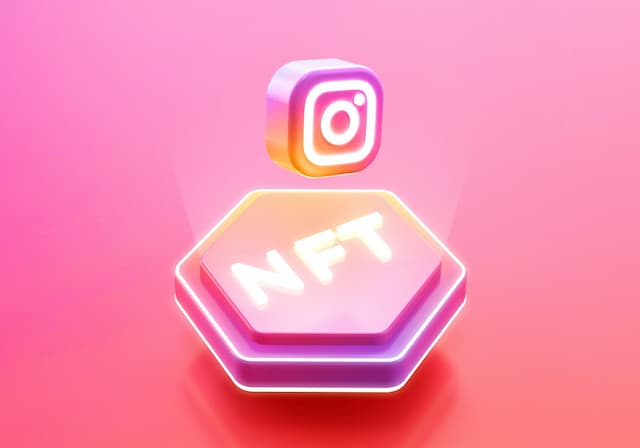
NFTs Come to Instagram
After many months of anticipation, Instagram’s CEO Adam Mosseri revealed a new Instagram update that will integrate sharing of NFTs into its platform. Users, collectors and creators will be able to view, share and engage with the NFTs on their feed, stories, and in messages. This will be a great way to display the digital assets they own on their profiles and view the tokens of their favoured artists, politicians or other friends they follow. Clicking on the tag will display the name of the creator and owner. The company is starting small with selected key athletes, models, and other influencers in order to test waters before building further on it. They want to learn from the community in the process and make Web3 technology accessible to a broader audience. An eventual full rollout will be available as Instagram expands this feature across the rest of their property including Facebook and their popular virtual reality Oculus programs. Adam Mosseri made a video explaining the entire NFT integration saying “I want to acknowledge upfront that NFTs and blockchain technologies and Web3 more broadly are all about distributing trust, distributing power.” Mosseri also emphasised that support for NFTs on Instagram could help introduce the technology to a much broader range of people. In January this year, Twitter introduced NFTs on the platform as hexagon-shaped profile pictures. An icon in the corner of Instagram posts of NFTs also appears as a hexagon. The complete video be viewed here: https://twitter.com/mosseri/status/1523655590672695296 Artists will be able to connect their digital wallets to their profiles and instantly keep their followers involved with any work that has been done as well as sell to their fans. The company is acquiring and aggregating public data from open blockchains such as Ethereum and Polygon, which helps to highlight who owns what. The Solana and Flow blockchains will be integrated next. Creators can link digital wallets such as MetaMask, Rainbow, and Trust Wallet, and will soon be able to connect their Coinbase Wallet, Dapper, and Phantom. Instagram’s integration of non-fungible tokens could lead to mainstream adoption of NFTs and support creators’ ability to make a living.
ARTICLES ON ART MARKET
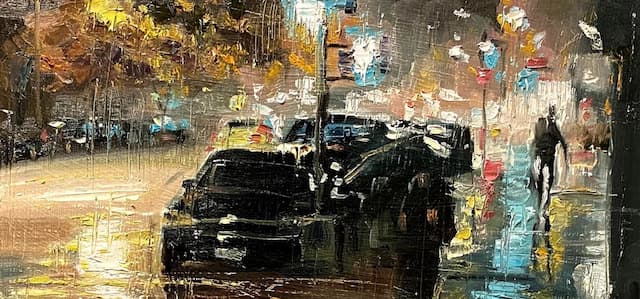
ART MARKET
The Evolution of Landscape or Scenery Painting: A Journey Through Different Periods
Scenery painting, particularly landscape painting, has been a cherished art form for centuries. It offers a window into the natural world, showcasing the evolution of artistic styles, techniques, and mediums across different historical periods. This article takes you on a journey through time, exploring the development of scenery painting and the major creators who left their indelible marks on this genre. From the early depictions of the natural world to modern interpretations, the evolution of scenery painting reveals not only artistic innovation but also the shifting perceptions of nature and its significance in the human experience. Prehistoric and Ancient Art: The Birth of Scenery Painting The earliest examples of scenery painting can be traced back to prehistoric times. These paintings, often found in caves, depict scenes of the natural world inhabited by early humans. These ancient artworks serve as a testament to the human urge to document their surroundings and reflect on the world around them. One of the most famous prehistoric scenery paintings is the Lascaux cave paintings in France, dating back to around 15,000 BCE. These paintings, which include depictions of animals and the surrounding environment, give us a glimpse into the artistic sensibilities of early humans and their connection to nature. As civilization advanced, so did the art of scenery painting. In ancient Greece, artists like Apollodorus and Zeuxis created scenic backgrounds for theatrical performances, a practice that would later influence the development of landscape painting in Western art. The Middle Ages: An Age of Symbolism During the Middle Ages, landscape painting was often subordinated to religious and symbolic themes. It served as a backdrop for religious narratives and was intended to convey spiritual meaning rather than to celebrate the beauty of nature itself. One of the significant developments during this period was the inclusion of landscapes in religious art, particularly in illuminated manuscripts and altar paintings. The landscapes were used as settings for biblical events and served to provide context to the religious narratives. Notable creators of this period include artists like Hieronymus Bosch, who painted landscapes that were rich in symbolism and surrealism. His works, such as "The Garden of Earthly Delights," feature landscapes that are intricate and fantastical, reflecting the religious and moral concerns of the time. The Renaissance: Nature as the Divine The Renaissance period witnessed a significant shift in the way nature was perceived and depicted in art. Artists during this time began to explore the idea of nature as a reflection of the divine, and landscape painting evolved to become an independent genre. Leonardo da Vinci, one of the most celebrated figures of the Renaissance, demonstrated a keen interest in the study of nature. His detailed sketches of landscapes and natural phenomena, such as his "Bird's-Eye View of a Landscape," show a deep appreciation for the beauty and complexity of the natural world. Albrecht Dürer, a German artist, made substantial contributions to the genre with his detailed engravings and woodcuts of landscapes. His works, such as "The Large Piece of Turf," displayed a meticulous observation of plant life and a desire to represent nature as realistically as possible. The Dutch Golden Age: Realism and Symbolism The Dutch Golden Age in the 17th century saw the emergence of landscape painting as a prominent genre. Dutch artists, such as Jacob van Ruisdael and Aelbert Cuyp, played pivotal roles in elevating the status of landscape painting, often depicting the serene and idyllic Dutch countryside. Landscape painting during this period embraced both realism and symbolism. Realistic depictions of the Dutch landscape and the daily life of its inhabitants became a hallmark of Dutch Golden Age art. Artists focused on capturing the effects of light, atmosphere, and weather conditions in their landscapes. Aelbert Cuyp, for example, was known for his warm, golden landscapes bathed in sunlight, often featuring cattle and river scenes. His "The Maas at Dordrecht" is a prime example of the Dutch Golden Age landscape, displaying a tranquil, idyllic scene with a masterful use of light and shadow. Jacob van Ruisdael, on the other hand, painted landscapes with dramatic weather and atmospheric conditions. His work "View of Haarlem with Bleaching Grounds" exemplifies his skill in capturing the shifting moods of nature. The Romantic Period: Nature as a Source of Inspiration The Romantic period in the late 18th and early 19th centuries saw a resurgence of interest in nature, not only as a subject but as a source of inspiration for artists. Nature was seen as a powerful force that could evoke deep emotions and serve as a reflection of the human condition. Artists like Caspar David Friedrich, known for his transcendental landscapes, painted scenes that often featured solitary figures in sublime natural settings. His "Wanderer above the Sea of Fog" is an iconic work of Romantic landscape painting, where a lone figure stands on a mountain peak, gazing out at a mist-covered landscape. The Romantic landscape painters often used dramatic and awe-inspiring landscapes to evoke feelings of awe and wonder. This period marked a departure from the strict realism of the Dutch Golden Age, allowing for more emotional and imaginative interpretations of the natural world. The Barbizon School: Pioneers of Plain Air Painting In the 19th century, the Barbizon School in France had a profound impact on the evolution of landscape painting. Artists of this movement, such as Jean-Baptiste Camille Corot and Jean-François Millet, rejected idealized or romanticized depictions of the landscape in favor of a more direct and realistic approach. The Barbizon artists often worked en plein air, or outdoors, to capture the true essence of nature. They sought to convey the simple beauty of the countryside and the daily lives of rural people. Jean-François Millet's "The Gleaners" is a prime example of this approach, depicting three peasant women harvesting grain in a realistic and unidealized manner. The Barbizon School laid the groundwork for the emergence of the Impressionist movement, which would further revolutionize landscape painting. Impressionism: Capturing the Moment Impressionism, which emerged in the late 19th century, was a groundbreaking movement that redefined how landscapes were painted. Artists like Claude Monet, Pierre-Auguste Renoir, and Camille Pissarro sought to capture the fleeting effects of light and color in the natural world. Claude Monet's "Water Lilies" series is a quintessential example of Impressionist landscape painting. Monet's fascination with the play of light on the water's surface and the changing colors of his garden pond led to a series of paintings that emphasized the transitory nature of the scene. The Impressionists were known for their loose brushwork and the use of broken color to create the illusion of light and atmosphere. They painted en plein air, embracing the spontaneity of nature and the changing conditions of the outdoors. Post-Impressionism: Individual Interpretations Following Impressionism, the Post-Impressionist movement brought forth a diverse range of artistic interpretations. Artists like Vincent van Gogh and Paul Cézanne built upon the Impressionist foundation but sought to imbue their landscapes with personal and emotional elements. Vincent van Gogh's "Starry Night" is a prime example of his unique approach to landscape painting. The swirling, starry night sky and the serene village
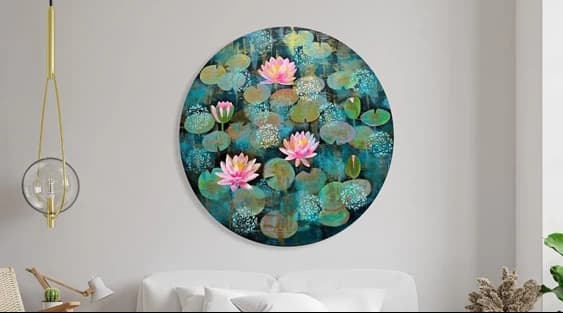
ART MARKET
The Ultimate Guide to Finding the Perfect Art Wall Paintings for Sale
Are you searching for the perfect art wall paintings to elevate your home decor? Look no further! Our ultimate guide has everything you need to know to find that one-of-a-kind masterpiece that will add a touch of sophistication to your living space. We understand that choosing the right wall painting can feel overwhelming with the plethora of options available in the market. That's why we've curated this comprehensive guide to simplify your decision-making process. From understanding different painting styles to selecting the right size and color scheme, our guide covers it all. We'll even walk you through the process of determining your personal taste and aligning it with the atmosphere you want to create in your home. Whether you're a seasoned art enthusiast or a first-time buyer, this guide is designed to help you find the perfect art wall paintings that resonate with your personality. So, get ready to transform your living space into a mesmerizing art gallery with our expert tips and advice. Benefits of incorporating art wall paintings in your home or office Art wall paintings have the power to transform any space, be it your home or office. They serve as a visual expression of your personality, adding depth and character to the walls. One of the key benefits of incorporating art wall paintings is their ability to create a focal point in a room. A well-placed painting can draw the eye and become a conversation starter. It can also help to tie together the various elements of your decor, creating a cohesive and aesthetically pleasing environment. In addition to their decorative value, art wall paintings can also have a positive impact on your mood and well-being. Studies have shown that engaging with art can reduce stress and anxiety, increase feelings of happiness, and even improve cognitive function. By surrounding yourself with artwork that resonates with you, you can create a space that promotes relaxation and creativity. Different types of art wall paintings When it comes to art wall paintings, there is a wide range of styles and genres to choose from. Understanding the different types can help you narrow down your options and find the perfect piece that suits your taste and home decor. One popular style of art wall paintings is abstract art. Abstract paintings are characterized by their non-representational forms and use of color, line, and shape to create a visual language. They can add a sense of energy and intrigue to a space, and their versatility makes them suitable for a variety of interior design styles. For those who prefer a more traditional approach, landscape paintings are a timeless choice. These paintings often depict natural scenery, such as mountains, forests, or seascapes. Landscape paintings can create a sense of tranquility and bring the beauty of the outdoors into your home. Another popular genre is portrait painting. Portraits capture the likeness and personality of a person, making them a great choice for adding a personal touch to your space. Whether you opt for a classic portrait or a contemporary interpretation, these paintings can make a bold statement and become a focal point in any room. Factors to consider when choosing art wall paintings Choosing the perfect art wall painting involves considering several factors that will help you make an informed decision. By taking these factors into account, you can ensure that the painting you choose not only fits your personal taste but also complements your existing decor. One of the first things to consider is the size of the painting. The size of the artwork should be proportional to the wall it will be displayed on. A large painting on a small wall can overwhelm the space, while a small painting on a large wall may get lost and fail to make an impact. Take measurements of your wall and consider the scale of the room to determine the appropriate size for your painting. Another important factor is the color scheme of the painting. The colors should harmonize with the overall color palette of the room. Consider the dominant colors in your decor and look for paintings that incorporate similar hues. This will help create a cohesive and visually pleasing environment. The subject matter of the painting is also a crucial consideration. Think about the atmosphere you want to create in the room. Do you want a serene and calming space? In that case, landscape or abstract paintings may be a good choice. If you want to make a bold statement or showcase your personality, consider opting for a painting with a strong subject or vibrant colors. Lastly, don't forget to consider your personal taste and emotional connection to the artwork. Art is subjective, and what resonates with one person may not resonate with another. Choose a painting that speaks to you on a deeper level, evokes emotions, and reflects your unique style and personality. Where to find art wall paintings for sale Now that you have a clear idea of the type of art wall painting you're looking for, it's time to explore the various avenues where you can find them for sale. From online marketplaces to art galleries and local artists, each option offers its own advantages and unique selection of artwork. Online marketplaces have become a popular destination for art buyers. Websites like RtistiQ, Saatchi Art, and Artsy connect artists with buyers from all over the world. These platforms offer a wide range of art wall paintings in different styles, sizes, and price ranges. They often have search filters that allow you to narrow down your options based on your preferences, making it easier to find the perfect piece. Art galleries and exhibitions are another great place to find art wall paintings. Visiting galleries allows you to see the artwork in person and get a better sense of its size, texture, and overall impact. Many galleries also represent emerging artists, giving you the opportunity to discover unique and undiscovered talent. If you're looking for something truly one-of-a-kind, consider reaching out to local artists or independent sellers. Many artists have their own websites or social media platforms where they showcase and sell their work. Buying directly from the artist not only supports their creative journey but also allows you to establish a personal connection and learn more about the inspiration behind the painting. No matter where you choose to buy your art wall painting, it's important to do your research and ensure that the seller is reputable. Read reviews, check their return policy, and ask any questions you may have before making a purchase. Investing in art is a personal experience, and finding the right seller can make all the difference. Tips for selecting the perfect art wall painting Now that you know where to find art wall paintings, let's delve into some expert tips for selecting the perfect piece that will enhance your home decor and bring joy to your space. Research and Explore: Take the time to research different artists, styles, and genres. Look for inspiration in magazines, art blogs, and social media platforms. Visit museums and galleries to get a better understanding of what resonates with you. Consider the Space: Before making a purchase, visualize how the painting will fit into your space. Consider the lighting, furniture arrangement, and overall ambiance of the room. Take into account the size, color, and subject matter of the painting to ensure it complements the space. Set a Budget: Art wall paintings can vary greatly in price, so it's important to set a budget before you start your search. Determine how much you're willing to spend and stick to it. Remember that art is an investment, and finding a piece you love within your budget is possible. Ask for Expert Advice: If you're unsure about the technical aspects of a painting or need guidance in making a decision, don't hesitate to seek expert advice. Consult with art consultants, interior designers, or even the artists themselves. They can offer valuable insights and help you make an informed choice. Trust Your Instincts: Ultimately, trust your instincts and choose a painting that speaks to you. Art is meant to evoke emotions and create a personal connection. If a painting resonates with you on an emotional level and brings you joy, it's likely the perfect choice for your home. By following these tips, you can navigate the world of art wall paintings with confidence and find the perfect piece that will enhance your living space for years to come. Conclusion Finding the perfect art wall painting may seem like a daunting task, but with the right knowledge and guidance, it can be an enjoyable and rewarding experience. By understanding different painting styles, considering important factors such as size and color scheme, and exploring various avenues for purchasing art, you can find a piece that truly reflects your personality and elevates your home decor. Remember that art is subjective, and what matters most is finding a painting that resonates with you on a deeper level. Trust your instincts, explore different options, and take the time to appreciate the beauty and creativity that art wall paintings bring to your living space. So, start your journey today! Transform your walls into a mesmerizing art gallery and create a space that not only inspires but also reflects your unique style and personality. Happy art hunting!

ART MARKET
Unveiling Limited Edition Prints: Are They Worth Collecting?
In the world of art, limited edition prints have garnered significant attention and debate over their value and worth. These prints, often produced by artists in limited quantities, have become popular for art enthusiasts to own a piece of their favourite works without breaking the bank. However, the question remains: are limited edition prints worth anything as an investment and a source of aesthetic pleasure? The reality is that Prints can be just as valuable as any other artwork created and have exceeded value in millions for some rare works by master artists. The Frugal Repast (Le Repas frugal), an etching by Pablo Picasso part of the La Suite des saltimbanques series created in 1904, is considered the first significant attempt by the artist in Printmaking, sold for GBP 6,014,500, in the year 2022 at christies. This article delves into the various facets of limited edition prints, exploring their history, factors affecting their value, and whether they hold lasting significance in the art market. The History of Limited Edition Prints Limited edition prints trace their origins back to the earliest forms of printmaking. Printmaking, as a technique, dates back to ancient civilizations such as the Egyptians and Chinese. However, producing prints in limited quantities gained traction during the Renaissance period in Europe. Artists like Albrecht Dürer and Rembrandt created engravings and etchings that were not only artistic masterpieces but also showed a shift in how art could be produced and distributed. Fast-forward to the 20th century, and limited edition prints began gaining prominence. Artists like Pablo Picasso, Salvador Dalí, and Andy Warhol embraced printmaking to make their art accessible to a broader audience. The Indian Master Raja Ravi Varma, gained large scale prominence due to lithographic prints, specifically of Gods and Godesses that he paiinted. The ability to reproduce artworks precisely and at a lower cost than original paintings made prints an attractive medium for artists and collectors. Factors Affecting the Value of Limited Edition Prints A complex interplay of factors influences the value of limited-edition prints. Here are some key aspects that contribute to their worth: Edition Size: One of the defining features of limited edition prints is the restricted number of copies produced. Generally, the smaller the edition size, the higher the perceived value. A print from an edition of 10 will likely hold more value than one from 100. Artist's Reputation: The artist's reputation plays a significant role in determining the value of their limited edition prints. Prints by renowned artists with established careers are more likely to appreciate value over time. Authenticity and Provenance: Authenticity is crucial in the art market. Limited edition prints with proper documentation and provenance are more valuable as they assure buyers of the artwork's legitimacy. Condition: The condition of the print also impacts its value. Well-preserved prints, without damage or discolouration, tend to command higher prices. Rarity: While the term "limited edition" implies rarity, some prints within an edition might be more sought after due to factors such as variations in colour or unique characteristics. Subject Matter: The subject of the print and its relevance to the artist's body of work can affect its value. Prints featuring iconic motifs or themes closely associated with the artist will likely be more valuable. Artistic Technique: The printmaking technique used can influence value. Specific techniques like etching, lithography, and serigraphy (silkscreen printing) require intricate skills and can add to the appeal and value of the print. Market Demand: Market trends and demand play a significant role in determining the value of limited edition prints. If a particular artist's work becomes fashionable or is featured in exhibitions, it can increase demand and higher prices. Limited Edition Prints as Investments Limited edition prints have often been seen as a way for collectors to invest in art without the hefty price tag of an original painting. However, the investment potential of these prints is a subject of debate. While some limited edition prints by highly regarded artists have appreciated significantly in value over time, not all prints yield substantial returns. The art market can be unpredictable, and factors such as shifts in artistic taste, economic conditions, and changes in the artist's popularity can impact the investment value of prints. Investing in limited edition prints requires careful research and consideration. It's essential to research the artist's career trajectory, study market trends, and consult experts before purchasing with the expectation of financial gain. Like any investment, risks are involved, and it's important not to rely solely on limited edition prints as a means of financial growth. Aesthetic Value and Enjoyment Beyond the realm of investment, limited edition prints hold intrinsic value in terms of aesthetics and personal enjoyment. Owning a limited edition print allows art enthusiasts to experience the beauty and creativity of an artist's work firsthand. These prints can serve as entry points into an artist's larger body of work, allowing viewers to connect with their artistic vision and style. Limited edition prints also allow individuals to decorate their living or working spaces with art that resonates with them. The affordability of prints compared to original artworks makes it possible for a broader range of people to own pieces that align with their artistic preferences. The Changing Landscape with Digital Art Digital technology has introduced a new dimension to the world of limited edition prints through the emergence of digital art and NFTs (Non-Fungible Tokens). NFTs allow digital artists to create limited edition digital artworks that are unique, provably authentic, and can be bought, sold, and owned on blockchain platforms. This raises questions about the value of traditional limited-edition prints in a world where digital art is gaining prominence. While digital art and NFTs have their own merits and challenges, traditional limited-edition prints continue to hold their place in the art market. The tactile quality of a physical print, the historical significance of printmaking techniques, and the enduring appeal of owning a tangible piece of art contribute to the lasting value of traditional limited edition prints. In Conclusion Whether limited edition prints are worth anything encompasses a multifaceted discussion. While these prints may not always yield substantial financial returns as investments, their value extends far beyond monetary considerations. Limited edition prints allow art enthusiasts to engage with the creative output of talented artists, enriching their lives aesthetically and emotionally. As the art market continues to evolve, limited edition prints remain an accessible and valuable means of connecting with art. Whether cherished for their aesthetic allure or sought after as collectibles, these prints are a testament to the enduring power of art to inspire, provoke, and delight.
